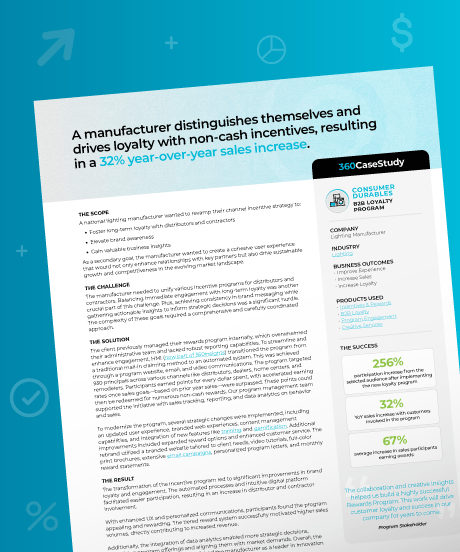Partner Segmentation is the process of categorizing business partners into distinct groups based on specific criteria, such as performance, industry, geographic location, or strategic value.
This involves:
- Defining segmentation criteria and goals
- Analyzing partner data
- Grouping partners into actionable categories
In practice, companies use partner segmentation to tailor strategies, optimize resources, and build stronger relationships with their partners. For example, businesses might allocate different levels of support to high-performing partners while developing targeted growth plans for emerging ones.
Partner segmentation is crucial for driving efficiency, strengthening partnerships, and maximizing revenue. By understanding the unique needs and potentials of different partner segments, businesses can create personalized approaches, leading to improved collaboration, better decision-making, and long-term success.
Simplify Program & Processes for Success

Case Study
Consumer Durables: Improving long-term loyalty through a cohesive user experience
A national lighting manufacturer wanted to switch up their channel incentive strategy in order to increase brand awareness and improve long-lasting relationships with distributors and contractors.
By creating a cohesive user experience - including the integration of training and gamification within this points-based rewards program and optimizing the engagement and comms strategy - this led to significant improvements in brand loyalty and increased revenue.
Learn how the program automations also improved the internal stakeholders reporting capabilities.
